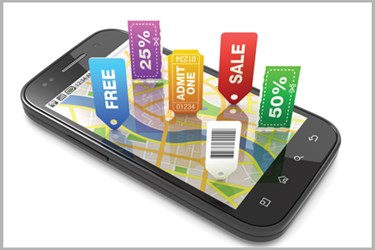Your Customer's Smartphone Has Omnichannel Superpowers: Harness This Power To Build The Future Of Retail
By Matthew Bright, NFC Forum Retail and Payment Working Group Chair

We’re living in a mobile-first, omni-channel world. To be successful, brands and retailers need to adapt in ways that allow them to communicate effectively across the entire customer journey from pre-discovery to post-consumption. Time is of the essence because consumer attitudes and behavior have shifted in ways that make conventional approaches obsolete:
- Consumer loyalty is fading. A shocking 90 of the top 100 Consumer Packaged Goods (CPG) brands have seen their share decline, according to a 2015 study by Catalina, a leading digital and consumer loyalty firm.
- Customer experience scores have plateaued. No brand studied by Forrester Research has achieved significant improvement in trust and experience scores since 2016.
- Shoppers simply have more choices. Two-thirds of consumers surveyed said that the number of companies or brands they consider when making purchase decisions has increased significantly compared to 10 years ago.
Brands and retailers need new tools to reach and stay connected to today’s hard-to-reach consumers, and the shift to mobile affects both e-commerce and in-store retail in profound ways:
- Mobile is the way to meet your customers at the point of decision: an eMarketer forecast noted that the number of U.S. internet users who go online exclusively via mobile device will reach 52.3 million by 2021.
- Even traditional in-store retail depends on mobile: according to Google, 82 percent of smartphone users say they consult their phones before they make an in-store purchase.
- In a study by Strategy Analytics, consumers tested in five in-store retail scenarios preferred using NFC by a margin of 2 to 1 compared to QR codes and as much as 8 to 1 compared to Bluetooth beacons.
Fortunately, more than two billion smartphones – including the most popular Android and iPhone models – contain a not-so-hidden superpower, Near Field Communication (NFC) technology, that simplifies and accelerates both mobile payments and direct brand-consumer communication in all stages of the consumer journey.
NFC Technology And The Retail Experience
NFC is a standards-based short-range wireless connectivity technology that makes your smartphones, wearables, tablets and other devices even smarter. NFC is built into billions of mobile devices and is compatible with hundreds of millions of contactless cards and readers already deployed worldwide.
The technology is incredibly easy to use: briefly touch (or ‘tap’) your NFC-enabled smartphone to an NFC-enabled object to launch a mobile web or app experience, make payments, share pictures, or even simplify Bluetooth and Wi-Fi pairing. It’s as simple as a touch: No PIN codes, camera-based scanners, or wires.
Integrating NFC in products, packaging, and even promotional materials can be surprisingly simple. In many cases, thin, flexible NFC tags can be easily applied as pressure-sensitive adhesive labels. Similarly, on the payments side of the retail environment, NFC-capable payment terminals are widely available from all major manufacturers and are quickly becoming the default option for new installations.
With NFC, brands and retailers can create and strengthen connections with the consumer at every step throughout their journey – pre-purchase, in-store, and post-purchase. Consumers like NFC because it connects them to actionable information (e.g., trusted reviews, social proof, offers and discounts) when and where it’s useful, offering a channel to interact with brands, receive offers and rewards, make simple one-tap payments and more.
For retailers, brands, and their agencies, NFC implementations can increase purchase intent, improve customer satisfaction, and promote deeper, long-lasting customer relationships. What’s more, when NFC-enabled products, packages and other objects direct users to cloud-based experiences, the resulting interaction data enables analytics that can provide real-time insights into consumer preferences and decision making. It’s therefore no surprise that NFC has become an omni-channel technology of choice for brands and retailers in categories as diverse as food & beverage, apparel, consumer packaged goods, sporting goods, and pharmaceuticals.
The Mobile, Omnichannel Opportunity
Implementing NFC is straightforward in traditional and omni-channel retail environments. To create smart items, brands and retailers integrate thin, flexible NFC tags, often in the form of adhesive labels, into their choice of products, packages, shelf talkers, posters, POS displays, and other touchpoints. Consumers do the rest, because they bring all the necessary reader equipment with them – namely, the NFC smartphone that’s carried in their pocket or bag.
Once NFC has been implemented in the retail environment, consumers can fundamentally change how they interact with brands and retailers. With a simple tap, NFC-enabled items become bridges between the physical and digital retail worlds. At the point of sale, retailers can drive NFC users to product comparisons, trusted reviews, and personalized offers. After purchase, the NFC tags attached to products and packages can serve as portals to how-to information and even e-commerce enablement to simplify reordering and encourage loyalty. Each interaction can feed a cloud-based analytics engine that can identify supply chain irregularities, understand consumer usage patterns and optimize campaign performance.
The best part: NFC technology is available immediately and has already been proven in B2C and B2B applications in support of brands, retailers, and agencies around the world. The NFC Forum’s 140+ member companies are standing by to assist you in the scoping and implementation of NFC based on your unique situation and needs.
Want to learn more about how NFC can revolutionize customer communication and enhance the omni-channel retail experience? Check out the Forum’s latest white paper: “Bridging Digital and Physical Retail with NFC”, available at no cost from the NFC Forum website: https://nfc-forum.org/retail-and-payment-stakeholders.
